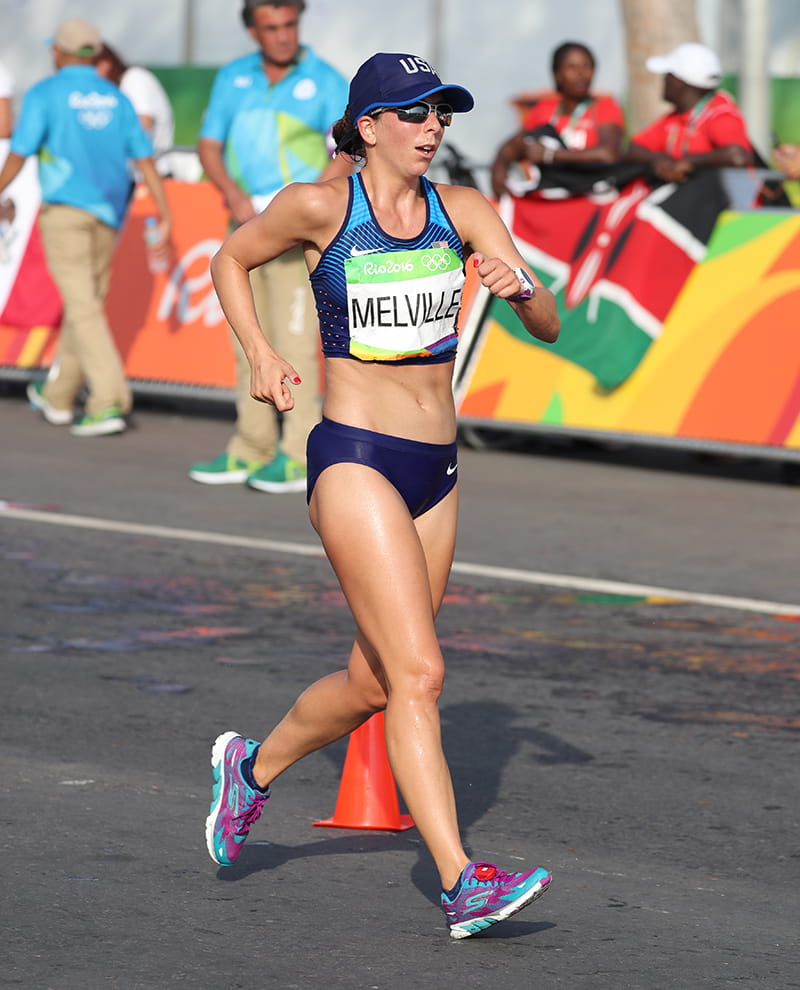Going for a Walk? Try Race Walking!

Please visit the ‘Drexel’s Response to Coronavirus’ website for the latest information on campus preparations and responses regarding COVID-19.
“At any time, race walking is a great and underrated exercise,” said Jeffrey Salvage, a teaching professor in the College of Computing & Informatics (CCI). “Given the current situation where we must socially distance and may not have access to our regular workout equipment, it’s a great time to try race walking.”
He would know. He’s competed, trained and coached for the competitive long-distance foot race sport (and Olympic sport!) in which one foot must appear to be in contact with the ground at all times. He estimates that it uses 95 percent of the body’s muscles — significantly engaging the legs, arms, hips and core — and fits the sweet spot between pedestrian walking and running without the added stress and with optimal benefits.
Right now, taking a break to go for a walk — either through pacing your house, apartment or backyard, logging some time on your treadmill and/or safely going outside while covering your face and maintaining a six-foot distance from those you pass — can be a nice way to de-stress and engage in physical activity. One way to really get the most out of your walking is to race walk, which is great for people of all ages and fitness levels.
“Just be mindful that if you are race walking near anyone, keep the appropriate distance from anyone and don’t walk directly behind someone even if it’s more than six feet. Walk slightly to one side or the other,” said Salvage.
A race walker since high school, Salvage has not only trained and competed in the activity for years, but he has also coached athletes and encouraged others to take up the sport. In addition to being the founder and CEO of RaceWalk.com, he has also created a “Walk Like an Athlete” instructional video and wrote seven or eight books (“I lose count,” he said) on race walking, including “Race Walking Revolution - a Detailed Guide for Both Beginning and Advanced Race Walkers” and “Race Walk Clinic in a Book.”
In response to the COVID-19 pandemic, Salvage has removed the paywall behind the video and lowered the e-book price for both books to the lowest possible price on Amazon — all in the hopes that people can watch it, learn from it and try race walking for some extra pep in their step.
The video shows how to race walk through guidance, visuals and do’s and don’ts — and it’s very easy to pick up race walking. All you need is the proper technique, comfortable athletic shoes and loose clothing, and a place to walk.
“For people starting a training program, I’d race walk every other day,” said Salvage. “This would let the muscles you are not used to using recover. You can still pedestrian walk other days.”
Salvage first started race walking in high school and even competed back in the day when he was a Drexel undergraduate and graduate student, participating in the Penn Relays and winning the Maccabi Games in Israel and finishing fourth in the Jr. North America’s Cup and Jr. Pan Am Games. An injury dashed his Olympic hopes but didn’t diminish his love of the sport. He still attended the Rio 2016 Summer Olympics in Brazil, watching the world’s top athletes compete.
Now, he has been race walking two miles four to five times a week while recovering from leg surgery unrelated to race walking. This term, Salvage is advising CCI students on their senior project and teaching software design while Drexel shifted to all remote learning.
“For a number of reasons my transition to teaching online was not painful, but just time-consuming,” he said. “I’ve been converting all synchronous material to asynchronous. For me, this means pre-recording highly detailed and polished videos of PowerPoint presentations. It’s not hard, I have all the equipment because of my race walking projects.”
But he’s staying positive, working up to completing 5Ks (3.1 miles) while race walking and thinking ahead to how he can use the material he’s updated for this term once classes are taught in-person on campus.
“The big win here is with these lectures canned, I hope to flip the classroom when we return,” he said. “Then the students can watch the videos at home and do interactive labs with class time.”
To watch Salvage’s instructional “Walk Like an Athlete” video, click here.
In This Article
Drexel News is produced by
University Marketing and Communications.

